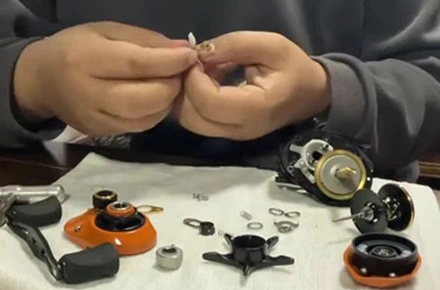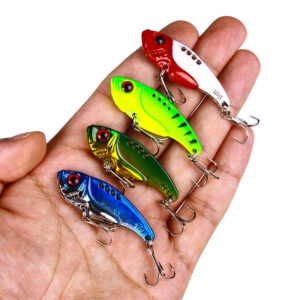Introduction
Fishing reels are essential tools for anglers of all skill levels. Whether you’re a beginner or a pro, you must maintain and care for your fishing reels. This is key to keeping them working well and lasting a long time. In this article, we will give you a full guide on how to care for your fishing reels. It covers cleaning, lubrication, storage, and troubleshooting. Let’s dive in and learn some valuable tips. They will help you keep your fishing reels in great condition!
Section 1: Cleaning Your Fishing Reels
Subsection 1.1: Why Cleaning is Important
Cleaning your fishing reels well is crucial. It’s key for their performance and durability. Regular cleaning helps remove dirt, debris, and saltwater. These can build up on the reels and cause damage and corrosion. It also ensures smooth operation and extends the lifespan of your reels.
Subsection 1.2: Supplies Needed for Cleaning
Before you start cleaning your fishing reels, gather the following supplies:
- Mild soap or reel cleaner
- Soft-bristled brush or toothbrush
- Clean, lint-free cloth
- Reel grease and oil (specifically designed for fishing reels)
- Q-tips or cotton swabs
- Isopropyl alcohol (optional)
Subsection 1.3: Step-by-Step Cleaning Process
- Disassemble the Reel: Carefully disassemble your fishing reel according to the manufacturer’s instructions. Take note of the order and position of each component to ensure proper reassembly later.
- Remove Dirt and Debris: Use a soft brush or toothbrush. Gently remove dirt, sand, or debris from the reel’s outside. This includes the body, spool, handle, and drag system. Be thorough but gentle to avoid damaging delicate parts.
- Clean the Components. Dip a clean, lint-free cloth or a cotton swab in a mild soap or reel cleaner. Use it to wipe down each part of the reel, including the gears, bearings, and drag washers. Pay special attention to areas with visible dirt or grime.
- Rinse and Dry: After cleaning, rinse the components with clean water to remove any residue or soap. Ensure that no water enters the reel’s interior. Use a clean, dry cloth to dry each component before reassembly carefully.
- Lubricate the Reel: Apply a bit of reel grease and oil to the needed parts. These include the gears, bearings, and handle knob. Don’t use too much oil. It can attract dirt and hurt the reel’s performance. Follow the manufacturer’s recommendations for lubricant application.
- Reassemble the Reel: Put the reel back together in the reverse order. Make sure you align and tighten each part. Refer to the manufacturer’s instructions if needed.
- Test the Reel: Once it’s reassembled, test the reel. Turn the handle and check the drag. Ensure smooth and consistent performance before using the reel for fishing.
Section 2: Lubricating Your Fishing Reels
Subsection 2.1: Why Lubrication is Important
You must grease your fishing reels. This reduces friction and prevents wear. It also keeps them running smoothly. It protects the inside from corrosion. It also makes your reels last longer. Regular lubrication ensures optimal performance and enhances your fishing experience.
Subsection 2.2: Choosing the Right Lubricant
When lubricating your fishing reels, use high-quality grease and oil. Design them for fishing reels. Avoid general-purpose lubricants. They may not protect enough and may harm the reel’s insides.
Subsection 2.3: Where to Apply Lubricant
Here are the key areas where you should apply lubricant:
- Gears: Apply a small amount of reel grease to the gears to ensure smooth and efficient power transfer. Spread the grease evenly across the gear teeth.
- Bearings: Use reel oil to lubricate the bearings. Apply a drop or two of oil to each bearing, ensuring it penetrates and coats the bearing surfaces.
- Handle Knob: Apply a small amount of reel grease or oil to the handle knob and its attachment point to ensure smooth rotation.
- Drag Washers: Lubricate the drag washers with a thin layer of reel grease to maintain consistent drag performance.
- Level Wind System (Baitcasting Reels): Apply a small amount of reel oil to the level wind system to ensure smooth line distribution during retrieval.
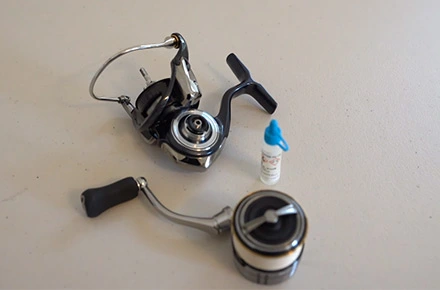
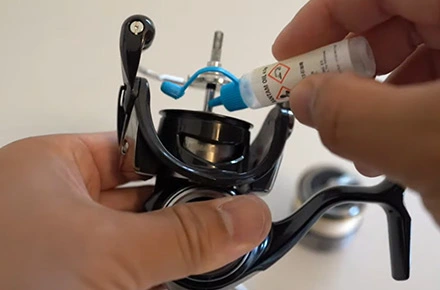
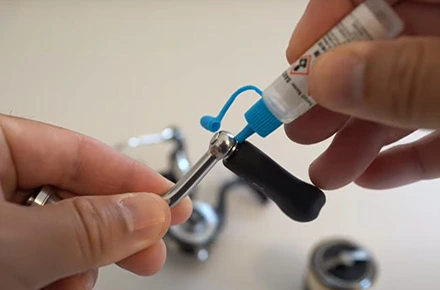
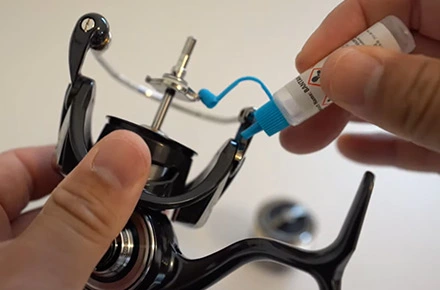
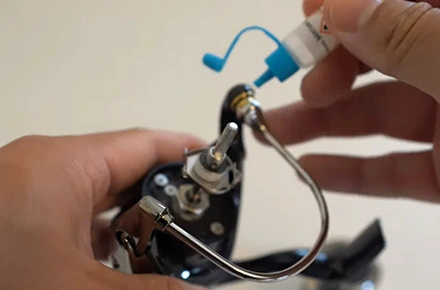
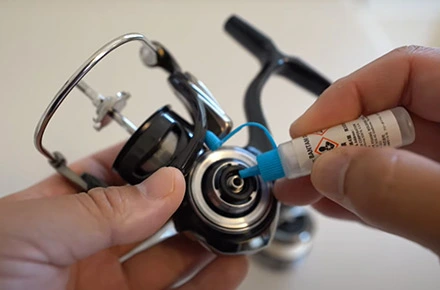

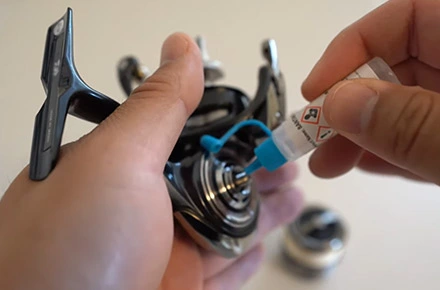
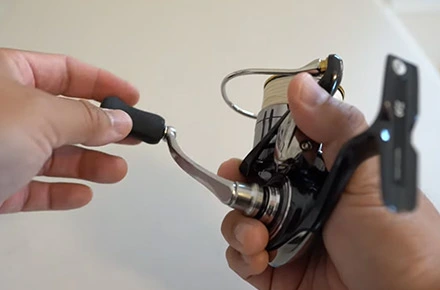
Subsection 2.4: Frequency of Lubrication
The frequency of lubrication depends on many factors. These include the reel type, usage frequency, and environmental conditions. In general, lubricate your fishing reels every few months. Also, do it after a big fishing trip. However, if you fish in saltwater or harsh conditions, you may need to lubricate more often.
Section 3: Proper Storage of Fishing Reels
Subsection 3.1: Importance of Proper Storage
Proper storage is key for keeping your fishing reels working well. It also prevents damage during periods of non-use. Storing reels incorrectly can lead to corrosion, mechanical issues, and decreased longevity. By following these storage tips, you can ensure your reels are in top shape when you’re ready to hit the water again.
Subsection 3.2: Clean and Dry Before Storage
Before storing your fishing reels, make sure they are clean and dry. Follow the cleaning process mentioned earlier. Pay extra attention to removing any saltwater, dirt, or debris from the reels. Allow the reels to air dry completely before storing them.
Subsection 3.3: Disassemble if Necessary
If you plan to store your fishing reels for a long time or won’t be using them for a while, consider taking them apart. This allows for better access to clean and lubricate the internal components thoroughly. However, only take apart your reels if you are comfortable and confident at reassembly.
Subsection 3.4: Use Reel Covers or Cases
Invest in reel covers or cases. They protect your fishing reels from dust, moisture, and physical damage during storage. These covers provide extra protection. They also help keep the reel in good condition.
Subsection 3.5: Store in a Cool, Dry Place
Choose a cool, dry storage location for your fishing reels. Excessive heat, humidity, and direct sunlight can harm the reels. They can also degrade the lubricants. Don’t store reels in basements or attics. Also, avoid places with big temperature swings or high humidity.
Subsection 3.6: Rotate the Reels
If you have multiple fishing reels, consider rotating their usage and storage. This prevents any one reel from sitting idle too long. It reduces the risk of mechanical issues or deterioration.
Subsection 3.7: Regular Inspection
Even during storage, it’s essential to inspect your fishing reels periodically. Check for any signs of corrosion, damage, or wear. If you notice any issues, address them promptly to prevent further damage.
Section 4: Troubleshooting Common Reel Problems
Subsection 4.1: Reel Not Retrieving Smoothly
If your fishing reel is not retrieving smoothly, it may be due to several reasons:
- Dirty or Damaged Line: Check the fishing line for any dirt, debris, or damage. Clean or replace the line as necessary.
- Improper Lubrication: Insufficient or improper lubrication can cause friction and hinder smooth retrieval. Ensure that the reel is adequately lubricated, following the lubrication guidelines mentioned earlier.
- Worn or Damaged Bearings: If the bearings are worn or damaged, they may cause resistance during retrieval. Consider replacing the bearings if necessary.
- Misaligned or Damaged Gears: Misaligned or damaged gears can impede smooth retrieval. Inspect the gears for any signs of wear or damage and realign or replace them if needed.
Subsection 4.2: Drag System Not Working Properly
If the drag system of your fishing reel is not working, try these troubleshooting steps:
- Drag Washers: Inspect the drag washers for any dirt, debris, or wear. Clean or replace the washers as necessary.
- Lubrication: Ensure that the drag washers are adequately lubricated with reel grease. Insufficient lubrication can cause drag issues.
- Drag Adjustment: Check the drag adjustment knob or system to ensure it is correctly set. Adjust the drag according to your fishing requirements.
- Drag Washers Alignment: Make sure the drag washers are aligned properly within the reel. Misalignment can cause drag performance issues.
Subsection 4.3: Reel Not Casting Smoothly
If your fishing reel is not casting smoothly, consider the following troubleshooting tips:
- Line Twist: Check for any line twists, as it can affect casting performance. Untwist the line or re-spool it if necessary.
- Spool Tension: Adjust the spool tension knob or control to ensure it is set appropriately for the type of lure or bait you are using. Incorrect spool tension can hinder casting distance and accuracy.
- Clean and Lubricate: Clean and lubricate the reel, paying special attention to the spool and line guide. Dirt or debris in these areas can affect casting performance.
- Improper Casting Technique: Evaluate your casting technique and make necessary adjustments. Practice proper casting techniques to improve casting performance.
Section 5: Additional Tips and Best Practices
In addition to the earlier tips, here are some more best practices. They are for maintaining and caring for your fishing reels:
- Avoid Excessive Force: Use your fishing reels within their specified limits. Avoid applying excessive force or strain, as it can lead to damage or premature wear.
- Regular Inspection: Check your fishing reels often. Look for any wear, damage, or malfunctions. Address any issues promptly to prevent further damage.
- Avoid Saltwater Exposure: If possible, avoid exposing your fishing reels to saltwater. Saltwater can accelerate corrosion and damage the reel’s internal components. If you fish in saltwater, rinse the reels with fresh water after each use.
- Follow the Manufacturer’s Instructions: Always refer to them for your reel model. They have vital info on maintenance, cleaning, lubrication, and troubleshooting.
- Seek Professional Help: If you are unsure about maintaining or fixing your fishing reels, get help from a good tackle shop or reel service center.
Conclusion
You must maintain and care for your fishing reels. This is essential for their long life and best performance. Regular cleaning, lubrication, and storage will keep your reels ready. They will be ready for your next fishing trip. Remember to follow the maker’s instructions. Use high-quality oils. Fix any issues. This will keep your fishing reels in top shape. Use these tips and best practices. They will help you make smooth casts and have reliable drag systems. Then, you can have trouble-free fishing. Happy fishing!
Get an Instant Quote With Fishkoolsports
Interested in fishing? At Fishkoolsports, we offer a wide range of fishing products including fishing lines, rods and reels, kayaks, and other fishing products at competitive prices.Reach out today for an instant quote.Get started with Fishkoolsports to begin your fishing journey.

